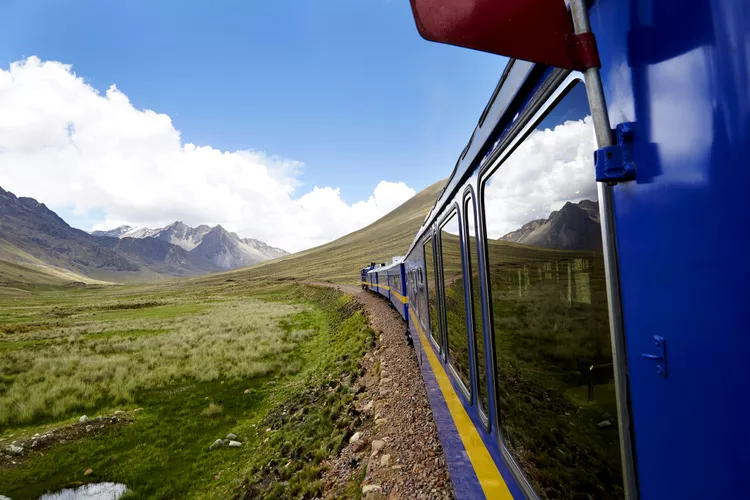Summary
Public transportation in Peru includes everything from modern air fleets to antiquated trucks. As you travel throughout the country, finding a balance between practicality, cost, comfort, and safety with the various methods of transport available is essential.
Aircraft
Flying is the quickest and safest form of transportation in Peru. Four main airlines operate domestic routes: LAN, StarPerú, Avianca, and Peruvian Airlines. Lima’s Jorge Chávez International Airport serves as the hub for all four airlines, providing excellent coverage with daily flights to many of Peru’s major cities. Ticket prices vary frequently, offering options for different budgets.
- Safety: Flying is the safest option in Peru.
- Comfort: Small seats but generally comfortable.
Bus
Buses are a primary method for long-distance public transport in Peru. They are cost-effective; however, it is crucial to avoid the cheapest options, as they may lack safety and reliability. Recommended companies include Cruz del Sur, Ormeño, Oltursa, and Movil Tours, which provide modern fleets and boast good safety records.
- Safety: Generally poor but significantly better with top-end companies.
- Comfort: Often uncomfortable on cheaper buses; nearly luxurious with higher-end services.
Taxi
Taxis are readily available in Peru’s urban areas; however, it’s important to exercise caution when hailing one. Always opt for registered taxis that appear modern, as unlicensed drivers may be unreliable. Agree on a fare beforehand since taxis in Peru typically do not use meters. Smaller taxis, referred to as ticos, fulfill the same purpose.
- Safety: Stick with licensed taxis for a safer experience.
- Comfort: Generally adequate, but keeping windows closed helps eliminate city traffic fumes.
Shared Taxi
Shared taxis, known as colectivos, function similarly to regular taxis but operate along set routes with fixed fares. They can carry up to four passengers legally and will pick up passengers from any point along the route. Prices are economical within urban areas, though they become more expensive for longer trips.
- Safety: Reliable for short trips, but exercise caution on rural roads.
- Comfort: Acceptable with four passengers, but can become cramped with additional riders.
Minibus
Minibusses are an exceedingly budget-friendly option for navigating Peru’s major cities. There are two prevailing types: combis (typically old Nissan or Toyota minivans) and larger micro buses (usually older Toyota or Mitsubishi models). Combis are ubiquitous in Lima, zipping around with ticket collectors shouting destinations. If you can withstand the chaos, you can travel across the city for approximately $0.50.
- Safety: Drivers can be reckless; watch out for pickpockets.
- Comfort: Sudden stops can lead to an uncomfortable experience.
Mototaxi
Mototaxis, or trimovils, provide a fast and convenient alternative in many provincial towns. These three-wheeled vehicles allow passengers to set prices beforehand, making them quite versatile. However, much like taxis, it is necessary to negotiate fares.
- Safety: They can be unsafe in heavy traffic.
- Comfort: Acceptable on smooth roads but can be uncomfortable on rough terrains.
Pickup Truck
Pickup trucks (camionetas) serve as basic public transport in rural areas, typically carrying workers from towns to the countryside. Although this mode of transport may not be popular with tourists, those who choose it often find themselves hanging onto the cargo area for dear life. It is advisable to avoid using camionetas for long-distance travel unless absolutely necessary.
- Safety: There’s a risk of falling off if you don’t hold on tightly; having travel insurance is highly recommended.
- Comfort: Minimal comfort is expected in this mode of transport.
Boat
In the Amazon region, large passenger ferries and smaller lanchas (motorboats) manage the majority of transport. Key port towns, such as Yurimaguas and Pucallpa, serve as endpoints to the road network. While traveling by boat can be adventurous and visually rewarding, it requires stamina and patience, particularly since some journeys may take several days. It’s advisable to bring sufficient provisions, as only basic meals are available onboard.
- Safety: Always keep an eye on personal belongings and exercise caution in busy dock areas.
- Comfort: Expect to find yourself in a hammock while embracing the experience of the mighty Amazon.
Train
Train travel is quite rare in Peru, with three companies providing services, including routes to the famed Machu Picchu and from Cusco to Puno. Experience the breathtaking scenery aboard the Ferrocarril Central Andino, offering a spectacular journey from Lima over the Andes to Huancayo, the highest standard-gauge train track globally. This train operates infrequently—only twice a month—so planning ahead is essential. Additionally, a train connects the Peru-Chile border from Tacna to Arica.
- Safety: Generally much safer than any road-based transport in Peru.
- Comfort: Offers a smooth ride, with luxury accommodations available on specific trains.





